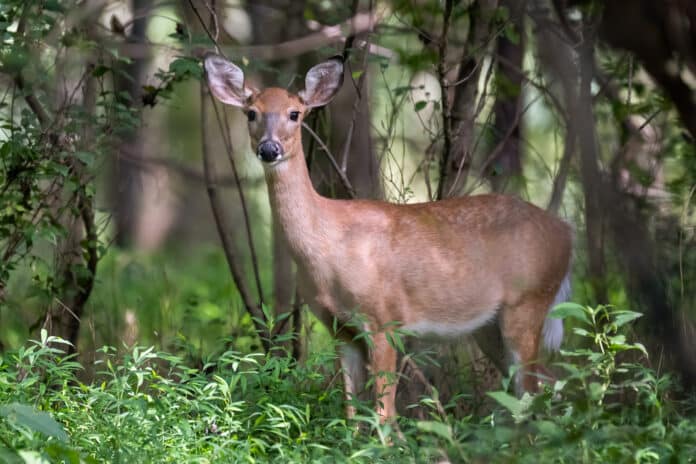The SARS-CoV-2 virus can infect a variety of mammals. The most SARS-CoV-2 infections in non-humans have been found in mink, felines, dogs, and cervids. However, free-ranging species like white-tailed deer (WTD) cannot be mass-culled, and wildlife reservoirs provide a more difficult issue.
A new research by Ohio State University suggests that white-tailed deer across Ohio have been infected with the virus that causes COVID-19. It shows that viral variants evolve about three times faster in deer than in humans.
Between November 2021 and March 2022, scientists collected 1,522 nasal swabs from deer allowed to roam freely in 83 of the state’s 88 counties. The SARS-CoV-2 virus was detected in more than 10% of the samples, and at least one positive case was discovered in 59% of the counties where testing was conducted.
The research team was astonished to learn from genomic analysis that at least 30 infections in deer had been transmitted to them by people.
The accumulated evidence points to the white-tailed deer species as a SARS-CoV-2 reservoir that supports ongoing mutation and suggests that the virus’s circulation in deer may facilitate the spread of the disease to other wildlife and livestock.
Andrew Bowman, associate professor of veterinary preventive medicine at The Ohio State University, said, “We expanded across Ohio to see if this was a localized problem – and we find it in lots of places, so it’s not just a localized event. Some of the thought back then was that maybe it’s just in urban deer because they’re in closer contact with people. But we’re finding plenty of positive deer in rural parts of the state.”
Beyond the finding of active infections, scientists also discovered that an estimated 23.5% of deer in Ohio had been exposed to the virus at some point through blood samples with antibodies, indicating prior exposure to the virus.
The 80 whole-genome sequences obtained from the samples collected represented two groups of viral variants: the alpha variant, the first named variant of concern that circulated in humans in the spring of 2021, and the highly contagious delta variant, which was the most prevalent human strain in the United States in the early fall of 2021 and accounted for almost 90% of the sequences.
Bowman said, “There’s probably a timing component to what we found – we were near the end of a delta peak in humans, and then we see a lot of delta in deer. But we were well past the last alpha detection in humans. So the idea that deer are holding onto lineages that have since gone extinct in humans is something we were worried about.”
The study pointed out that, in the case of a spillover back to humans, vaccination against COVID-19 will probably help protect people against serious illness. Siberian hamsters are used as an animal model for SARS-CoV-2 investigations. An analysis of the effects of deer variations on these rodents revealed that vaccinated hamsters did not suffer as much from infection as uninfected animals.
Nevertheless, it is anticipated that deer mutations will vary over time. Analyses of the mutations discovered in the samples revealed that alpha and delta variants evolved more quickly in deer than in humans.
Bowman said, “Not only are deer getting infected with and maintaining SARS-CoV-2, but the rate of change is accelerated in deer – potentially away from what has infected humans.”
It is yet unknown how the virus spreads from people to white-tailed deer. No significant outbreaks of deer-origin strains have affected people thus far, despite the fact that there are around 30 million deer roaming freely throughout the United States.
Journal Reference:
- McBride, D.S., Garushyants, S.K., Franks, J. et al. Accelerated evolution of SARS-CoV-2 in free-ranging white-tailed deer. Nat Commun 14, 5105 (2023). DOI: 10.1038/s41467-023-40706-y
